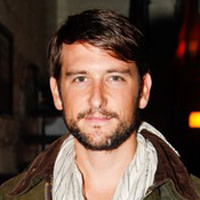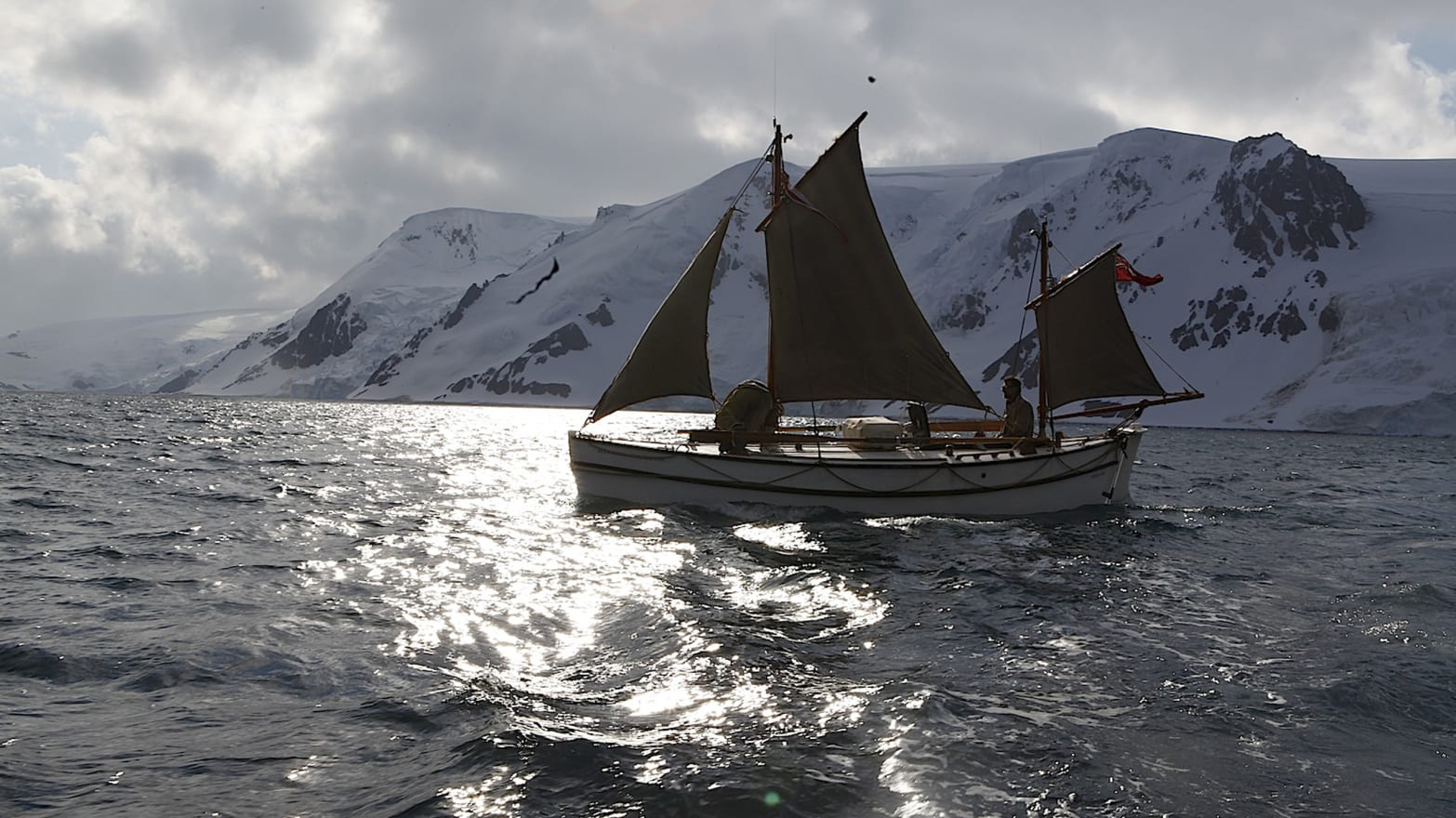The so-called “heroic age” of polar exploration lasted from the tail end of the Victorian era until the outbreak of World War I. When we consider this period’s doughty adventurers, none speaks more directly to our modern souls than Sir Ernest Shackleton. The exhibitions, movies, books, and other paeans to Shackleton in the last decade or so (from the 2002 film starring Kenneth Branagh to the assiduous reverse-engineering, in 2011, of his favored whisky) appear to have perma-frosted him, as it were, atop the pile.

A few reasons for this suggest themselves. History has shown Shackleton to be more honest than Peary, who lied about getting to the North Pole, and he seems more relatable than both chilly Amundsen, the first man to reach the South Pole, and Scott, who lost out to Amundsen and died nobly and perhaps (the thinking now goes) a bit stupidly in the process.
Not unknown in his time, Shackleton was nevertheless not as revered then as he is now. His ambitious Imperial Trans-Arctic Expedition didn’t even come close to its goal of crossing Antarctica; moreover, the British public might have questioned why he spent nearly 500 days floundering about in the middle of nowhere while they were suffering for king and country through World War I.
But times have changed, and Shackleton’s escape, via lifeboat, from one of the most inhospitable places on earth is now hailed—rightfully so, it would seem—as “The World’s Greatest Journey of Survival,” to quote the subtitle of Tim Jarvis’s new book, Chasing Shackleton.
Another tome on Shackleton? And yet this one’s differences are discernible at a glance: it is full of contemporary color photos, and relates the author’s daring attempt to follow in Shackleton’s footsteps—not the entire Trans-Arctic tribulation, mind you, with the months of near-starvation spent marooned on groaning floes of ice, but the gripping final weeks: an 800-mile boat journey across angry seas in a 22-foot whaling boat, followed by a 36-hour sprint, without benefit of sleeping bags or climbing equipment, across the uncharted mountain peaks of South Georgia.
To replicate this epic slog using modern methods would be challenge enough. To do it in period fashion, as Jarvis set out to do, would seem to border on madness. (In fact, the marine portion has been tried twice before, albeit with improved boats. One was abandoned at sea; the other had to be towed into harbor.)
It’s no spoiler to reveal that Jarvis, a 47-year-old Australian, has achieved something truly marvelous with this journey. He comes across in the book, and in interviews, as a serious and humble student of Shackleton, respectfully in awe of his predecessor and notably more generous when it comes to sharing credit.
Perhaps unsurprisingly, his mettle in polar extremes far outstrips his writing ability. In aesthetic terms, then, this account can’t compare with Shackleton’s own (ghostwritten) tale of the expedition, South, or that of his resourceful skipper, Frank Worsley, or Alfred Lansing’s gripping 1959 treatment, Endurance.
##
Those versions of the story present a Herculean drama of man versus nature. Not so with Jarvis: the grueling physical component notwithstanding, it is the logistical and man-made obstacles that really resonate here. He bends over backwards to insure the trip, dips into his mortgage to fund it, and secures no fewer than five government-issued permits; nothing, however, seems to bedevil him more than the film crew—for this adventure is being recorded for posterity. (The first episode in a three-part series aired on January 8, on PBS.) And as grave a risk as the hypothermia, frostbite, yawning crevasses, and 20-foot Cape rollers surely pose, their awesomeness eludes Jarvis’s utilitarian prose. The nemesis that emerges most potently is that of reality TV.
Partnering with a production company, Jarvis writes, was a financial necessity. (And the finished product, I would add, is well worth watching.) And yet he comes to loathe the prying eye of the camera on his soaked, exhausted, and shivering men. The production crew, from the UK-based outfit responsible for The Discovery Channel’s “Gold Rush,” seems to delight in their discomfort. “The more miserable we looked in our old gear, the happier they were,” Jarvis laments. They nag him about the historical inauthenticity of his food, forcing him to point out that he can’t very well go snatching albatross eggs or clubbing seals.

Like trials handed down from Olympus onto a storm-tossed hero, troubling updates arrive via radio from the upholstered support vessel. Each new setback, whether contrived or not, makes Jarvis newly “determined not to give the cameras the reaction they craved.”
Following the boat voyage, the expedition doctor (whom Jarvis dislikes from the start) delivers some bad news: several of the team members have the premature-frostbite condition known as trench foot. The doctor advises—sensibly—that they pull out. And when he raises concerns about insurance coverage, Jarvis deduces from his “stilted” tone that the production team has encouraged him to stir the pot.
Sapping morale, the doctor’s warnings threaten to become game-enders. Failure may not have been an option for Shackleton, but it is here, and Jarvis (who sledged across nearly all the way of Antarctica in 2006, also in Edwardian kit) knows that his emergency-relief option is a “double-edged sword.” Imperiled as he is, he cannot recreate the tooth-and-nail desperation that fueled Shackleton.
##
All this “intrigue” delays the team’s departure into the mountains, and the weather turns. The cameramen quaver, which leads Jarvis and his mountain expert (a hardened alpine trainer from the Royal Marines named Baz) to suspect anew that “the film crew had underestimated the seriousness of the crossing and were not well enough prepared.” Jarvis doesn’t rue their loss. “I had rapidly come to realize that numbers were our enemy.”
The final composition of his overland team matches up nicely with Shackleton’s. Jarvis sees this as an example of “synchronicity,” his term of choice for the many coincidences that align his trip with his predecessor’s. Shackleton, who was brought up Quaker, credited “Providence” for the good fortune he experienced at key points, and like his companions on South Georgia felt certain that a divine presence had escorted them through this last and most unlikely chapter. “It seemed to me often that we were four, not three,” he later wrote; T.S. Eliot put the lines to use in The Waste Land.
For Jarvis, however, the only holy presence looking out for them is Shackleton. “In among the misery of our conditions we could take great solace from the fact that he was here with us in spirit,” he records. Elsewhere, Jarvis ventures that what Shackleton experienced (or said he did) as an outside force might be better understood as “a resourceful part of your personality…one you are so unaccustomed to experience that it feels like another.”
Here especially, the pedestrian language falls short. Compare it to Lansing’s description of the six men struggling to keep their lifeboat aright in the South Sea storms: “Life was reckoned in periods of a few hours, or possibly only a few minutes—an endless succession of trials leading to deliverance from the particular hell of the moment.” Worsley memorably described the same nightmare as “our baptism—the beginning of the ordeal by water.”
Even if it was a crutch, the Biblical language in these older writings did justice to the enormity of the forces at play. Jarvis has a personal experience of the same forces. But if he doesn’t describe them vividly, what do the rest of us take away? I suppose the answer here is the documentary. Unfortunately, the fury of the sea and mountains doesn’t translate on the small screen. Jarvis, despite his imposing frame and a profile you could sharpen a knife on, barely registers as a character. He resisted the TV crew’s goading pretty successfully, it turns out, and thus it is the more demonstrative—and increasingly secondary—team members who drive the story.
Jarvis, who spent four years planning the trip, remains focused on its success. Shackleton would have understood his qualms about overeager image-gathering, even if his legacy has benefited enormously from Frank Hurley’s remarkable photographs of the Imperial Trans-Antarctic. (Hurley did not accompany Shackleton on the dash to South Georgia.) “The Boss,” as his men called him, projected Hurley’s silent films during his lectures. But while Hurley’s enthusiasm for visual drama annoyed him at times, they don’t seem to have threatened to undermine his leadership.
At one point in South, Shackleton relates his photographer’s eagerness to film a pair of expedition members who have gone overboard. “I firmly believe that he would have liked the two unfortunate men to remain in the water until he could get a ‘snap’ at close quarters,” he fairly snorts. The Boss would have none of it. “We hauled them out immediately, regardless of his feelings.”

